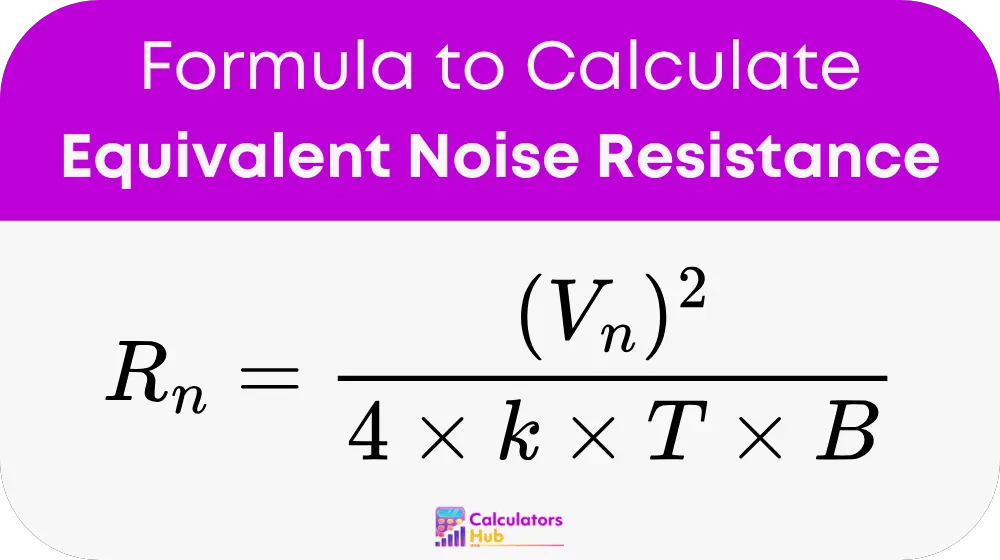The Equivalent Noise Resistance Calculator helps users determine how much noise a resistor introduces into a system. It uses electrical properties like voltage, temperature, and bandwidth to compute the resistance that would generate the same noise voltage in an ideal resistor. This is important in communication systems, amplifiers, and other electronics where understanding and minimizing noise improves performance and accuracy.
By using this calculator, users can avoid manual calculations and quickly find equivalent resistance values. It supports both engineers and students in analyzing how noise affects their electronic circuits. This is especially useful when designing low-noise amplifiers or radio-frequency receivers where every bit of noise matters.
formula of Equivalent Noise Resistance Calculator

Where:
Rₙ = equivalent noise resistance (ohms)
Vₙ = RMS noise voltage (volts)
k = Boltzmann’s constant = 1.380649 × 10⁻²³ J/K
T = temperature (kelvin)
B = bandwidth (hertz)
This formula expresses the equivalent resistance that produces a specific noise voltage at a given temperature and bandwidth. It is derived from the Johnson-Nyquist noise equation, commonly used in electrical engineering.
Helpful Reference Table
This table offers commonly used values to help users quickly estimate equivalent noise resistance without a calculator.
| RMS Noise Voltage (Vₙ) | Bandwidth (Hz) | Temperature (K) | Approx. Equivalent Noise Resistance (Ω) |
|---|---|---|---|
| 1 µV | 1,000 | 290 | 6.25 MΩ |
| 10 µV | 10,000 | 300 | 6.04 MΩ |
| 100 µV | 100,000 | 290 | 6.25 MΩ |
| 1 mV | 1,000,000 | 290 | 6.25 MΩ |
| 10 mV | 1,000,000 | 300 | 625 MΩ |
Note: Values are approximated using Rₙ = (Vₙ)² / (4 × k × T × B) for quick reference.
You can also convert voltage values using µV = 10⁻⁶ V and mV = 10⁻³ V for manual adjustments.
Example of Equivalent Noise Resistance Calculator
Let’s say you have a noise voltage of 10 µV, a bandwidth of 10,000 Hz, and a temperature of 300 K.
First, convert 10 µV to volts:
10 µV = 10 × 10⁻⁶ = 0.00001 V
Now apply the formula:
Rₙ = (0.00001)² / (4 × 1.380649 × 10⁻²³ × 300 × 10000)
Rₙ = 1 × 10⁻¹⁰ / (1.656779 × 10⁻¹⁷) ≈ 6.04 MΩ
So, the equivalent noise resistance is approximately 6.04 megaohms.
Most Common FAQs
It helps engineers measure how much noise is added by a resistor in electronic systems. This is key in improving signal clarity in sensitive devices.
Yes, higher temperatures increase noise voltage, which affects the calculated resistance. That’s why the formula includes temperature in kelvin.
This calculator is mainly used for AC systems where noise due to thermal effects is a concern. It is less relevant for pure DC systems.